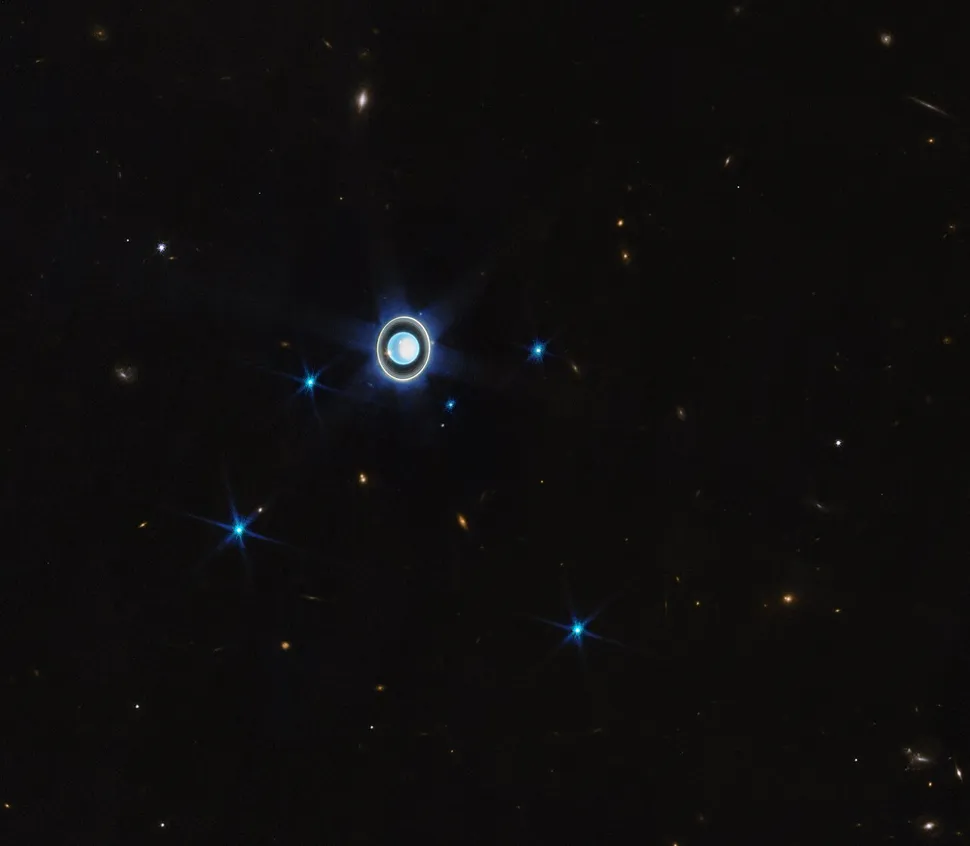
A full-sized wide shot of Uranus captured by the James Webb Space Telescope on Feb. 6, 2023 shows six of the planet's 27 known moons.
(Image credit: NASA, ESA, CSA, STScI, J. DePasquale (STScI))
Posted on 04/07/2023 8:43:17 AM PDT by BenLurkin
The James Webb Space Telescope (JWST) has captured an amazing image of Uranus, showing in great detail the ice giant's ring system, its brightest moons and its dynamic atmosphere.
The new observation, made on Feb. 6, follows a similarly stunning photo JWST captured recently of the solar system's other ice giant, Neptune.
The new Uranus image shows 11 of the planet's 13 known rings, some of which are so bright that they blend together somewhat. What will really astound astronomers, however, is the fact that JWST's Near Infrared Camera (NIRCam) instrument is sensitive enough to have captured the innermost two of Uranus' dusty rings.

A full-sized wide shot of Uranus captured by the James Webb Space Telescope on Feb. 6, 2023 shows six of the planet's 27 known moons.
(Image credit: NASA, ESA, CSA, STScI, J. DePasquale (STScI))
(Excerpt) Read more at space.com ...
You need a huge telescope to see the dark rings around Uranus, but I use only a small mirror to see the sister planet, Mianus.
Yeah, you’re gonna need a salve for that.
...and now we know why one planet was named using the Greek name, and all the others are Roman.
The jokes write themselves!
“Caelus” just doesn’t have potty joke potential.
Especially Mare Pete.
For one to fully “probe” the “assteroid” belts around “Ur anus” your level of fecundity must be developed to a rectal surety.
Disclaimer: Opinions posted on Free Republic are those of the individual posters and do not necessarily represent the opinion of Free Republic or its management. All materials posted herein are protected by copyright law and the exemption for fair use of copyrighted works.